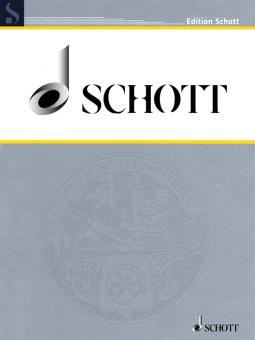Easy Concert Pieces 1
50 Easy Pieces from 5 Centuries
Easy Concert Pieces 1
50 Easy Pieces from 5 Centuries
- Editor Rainer Mohrs Monika Twelsiek
-
Dificultad
- Editorial Schott Musik
- Nº de pedido ED22547-DL
Descargar inmediatamente al finalizar la orden
IVA incluido.,
Más gastos de envío
No disponible en todos los países. Leer más
Descripción de la:
For the Easy Concert Pieces series, the experienced piano teacher Monika Twelsiek compiled pleasant, easy piano pieces for beginners and published them in two volumes in progressive order. The third volume is in preparation.The two volumes are intended to complement a piano tutorial method and are particularly suitable for performance at auditions at music schools, for examinations and for competitions. They offer varied repertoire in a broad selection of pieces from the Baroque, Classical, Romantic and Modern eras.
Volume 1 (ED22547) can already be used by beginners, containing pieces in the five-note range and easy pieces spanning a single octave. Other criteria for selection are simple rhythms and very easy chords. Crossing the thumb underneath, playing several parts together and pedal use are not yet required.
Volume 2 (ED22548) contains pieces with an extended range of two octaves. Crossing the thumb under, pedal use, simple polyphony and three- or four-part chords all feature here, as do simple ornaments, cantabile playing and differentiating between melody and accompaniment.
Volume 1 (ED22547) can already be used by beginners, containing pieces in the five-note range and easy pieces spanning a single octave. Other criteria for selection are simple rhythms and very easy chords. Crossing the thumb underneath, playing several parts together and pedal use are not yet required.
Volume 2 (ED22548) contains pieces with an extended range of two octaves. Crossing the thumb under, pedal use, simple polyphony and three- or four-part chords all feature here, as do simple ornaments, cantabile playing and differentiating between melody and accompaniment.


